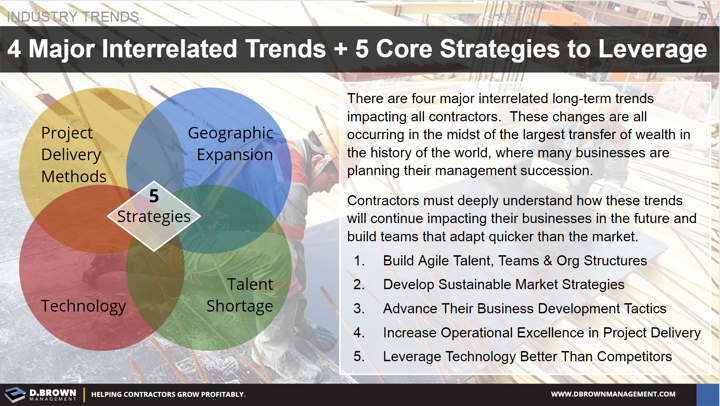The challenges for contractors are compounded by the shortage of talent at all levels, including craft, management, and technical experts. This rate of change will continue to accelerate into the foreseeable future.
As with any industry or economy facing an accelerating rate of change, the gap broadens between the top and the bottom; especially when it comes to profitability. Contractors do not necessarily have to be innovators, but for long-term viability, they must to be “Fast Followers” in a few key areas.
We have been relentlessly focused on helping contractors successfully navigate this changing landscape. A key result of this focus is a refined set of training, tools, and services to help you build your roadmap for 2018 and beyond.
One of those tools is an Executive Briefing tailored for your company. This tool is designed to help your team more deeply understand these trends and how they will continue impacting your company. We wrap up with a discussion about strategies and tactics you can use to leverage these trends to your advantage.

